Technology
Robots could go full ‘Terminator’ after scientists create realistic, self-healing skin
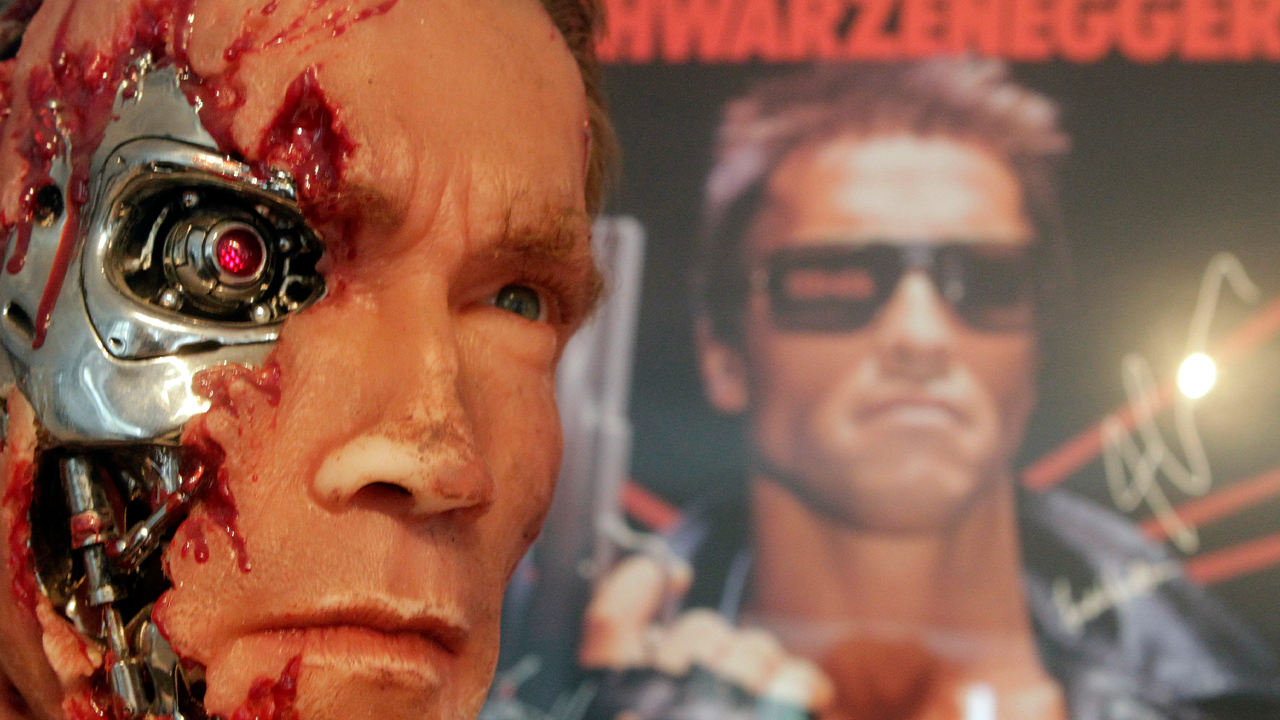
Robots could soon be cloaked in human-like synthetic skin, similar to the cyborg assassin of the “Terminator” movie franchise, after Stanford University researchers developed an ultra-realistic, self-healing material.
Researchers have been studying and developing convincing skin materials for robots for years, with Stanford professor Zhenan Bao touting the first multi-layer self-healing synthetic electronic skin back in 2012.
More than a decade later, Bao and fellow researchers have taken their studies even further into the future: layers of synthetic skin that can now self-recognize and align with each other when injured, simultaneously allowing the skin to continue functioning while healing.
“We’ve achieved what we believe to be the first demonstration of a multi-layer, thin film sensor that automatically realigns during healing,” Christopher B. Cooper, Stanford Ph.D. student and co-author of the study, told SWNS.
OPENAI AND FIGURE DEVELOP TERRIFYINGLY CREEPY HUMANOID ROBOTS FOR THE WORKFORCE
A figure from the movie The Terminator is displayed inside the house where Austrian actor, former champion bodybuilder and former California governor Arnold Schwarzenegger was born, in the southern Austrian village of Thal, October 7, 2011. (REUTERS/Herwig Prammer )
“This is a critical step toward mimicking human skin, which has multiple layers that all re-assemble correctly during the healing process.”
Armoring an artificial intelligence-powered robot with life-like skin could be the way of the future, making humans feel more comfortable around such technology, according to SWNS. The material is similar to actor Arnold Schwarzenegger’s cyborg character in “Terminator,” which boasted a robotic endoskeleton covered by “living tissue.”
AI COULD GO ‘TERMINATOR,’ GAIN UPPER HAND OVER HUMANS IN DARWINIAN RULES OF EVOLUTION, REPORT WARNS
Similar to human skin, the materials produced by the Stanford researchers can sense thermal, mechanical or electrical changes around it. The current prototype featured in the study was designed to sense pressure.
“It is soft and stretchable. But if you puncture it, slice it, or cut it each layer will selectively heal with itself to restore the overall function. Just like real skin,” co-author Sam Root said.
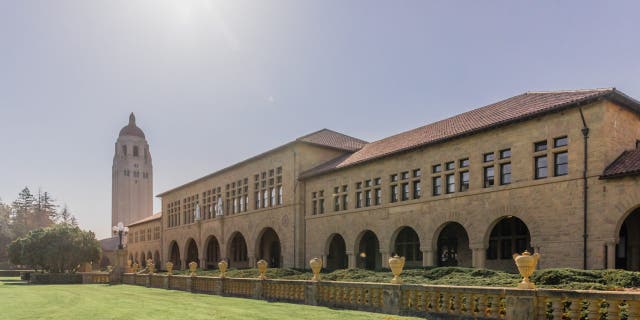
A general view of the buildings of the Main Quadrangle and Hoover Tower on the campus of Stanford University in Palo Alto, California. (David Madison/Getty Images)
“One layer might sense pressure, another temperature, and yet another tension,” Root added.
The researchers developed silicone and polypropylene glycol materials that can stretch like human skin without tearing, while magnetic properties allow the skin to self-align.
When the material is warmed, it softens before returning to its normal state. If the material is damaged, it can self-heal in just 24 hours when warmed to 158°F, while the same healing process takes about a week at room temperature.
NEW POWERFUL AI BOT CREATES ANGST AMONG USERS: ARE ROBOTS READY TO TAKE OUR JOBS?
“Combining with magnetic field-guided navigation and induction heating, we may be able to build reconfigurable soft robots that can change shape and sense their deformation on demand,” co-author Renee Zhao said.
The researchers said they are next working on making the layers of skin as thin as possible that have different functions, such as a layer that can sense a change in temperature and another layer that senses pressure.
WILL AI EVER BE SMART ENOUGH TO DECIPHER FEDERAL REGULATIONS?
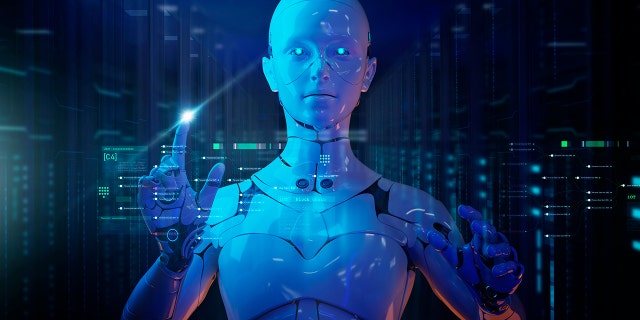
AI robot process automation RPA Document management system DMS for company digital transformation paperless workflow, security cloud digital technology. futuristic 3D robot (iStock)
The research comes as artificial intelligence is having a boom in popularity, including millions of people flocking to use chatbot ChatGPT and create life-like images generated by AI.
Amid the tech race to build even more powerful AI systems, humanoid robots are also finding themselves in the spotlight. A Texas-based company is working on “general purpose robots” that will be used to assist with household duties, while a robotics startup backed by OpenAI is working to commercialize humanoid robots for the workplace.

Technology
Fujifilm’s new X-T50 has a film simulation dial — and a questionable price
/cdn.vox-cdn.com/uploads/chorus_asset/file/25450606/xt50crop.jpg)
Fujifilm has just announced a pair of new cameras at the company’s X Summit Sydney event. There’s the medium format GFX100S II, which frankly falls outside my scope of interest (and budget). The more mainstream of the two is the X-T50, which is a followup to — but not a replacement for — the X-T30 II, which will remain in Fujifilm’s lineup moving forward.
The X-T50 is a hodgepodge of the camera maker’s new and old tech. Let’s start with the new. The body has a fresh, more rounded shape that’s unlike anything else in the X-Series lineup, and there’s a film simulation dial right on the top, a first for any Fujifilm camera. You get several preset film sims to circle between and can choose your own for the three customizable slots — though you can’t set these to custom film recipes. Still, the dial goes to show what a vital part of Fujifilm’s appeal that these simulations have become over the years.
The X-T50 includes the same 40-megapixel sensor as the X-T5 and X-H2, plus the accompanying fifth-gen processor, so this camera offers a substantial increase in both resolution and autofocus performance compared to the X-T30 II. And it also gains a 7-stop in-body image stabilization system; the far less expensive X-T30 II lacks IBIS altogether. Continuous shooting is limited to 8fps with the mechanical shutter, whereas the X-T5 and X-H2 can both hit 15fps. For storage, there’s a single UHS-II SD card slot. Video performance has also been dialed up significantly:
But there are still some older hardware elements to this camera. For one, you’re stuck with the last-generation battery that isn’t nearly as long-lasting. And disappointingly, the electronic viewfinder is also unchanged from the X-T30 II. You do at least get the same 3-inch, 1.84-million dot rear LCD with two-way tilt as on the X-T5.
The X-T50 slots into a curious spot when it comes to pricing. If you’re buying the body alone, it’s $1,399.99, which is $500 more than the X-T30 II. But again, Fujifilm doesn’t consider this a replacement for that camera. It gets its own unique place in the lineup, which now looks like this:
Some of the upgrades that come with stepping up to the X-T5 include water resistance, a nicer EVF, dual SD slots, better continuous shooting performance, and the newer battery with superior endurance.
Fujifilm’s kit lens is also getting a notable revamp. The company’s well-regarded 18-55mm glass is being replaced by a new, lighter 16-50mm f/2.8 – 4.8 lens that now features water resistance. (The X-T50 itself doesn’t have any official water resistance.) Fujifilm believes this lens does a better job resolving that 40MP sensor compared to the ancient 18-55mm. It’s also a constant length, so all the zooming now happens internally without the lens having to extend. Sold on its own, the new 16-50mm lens costs $699. The combined X-T50 kit runs $1,799.99, so you’re only paying $400 for the lens in that scenario.
Technology
Freak robot made in China can learn, think, work like humans
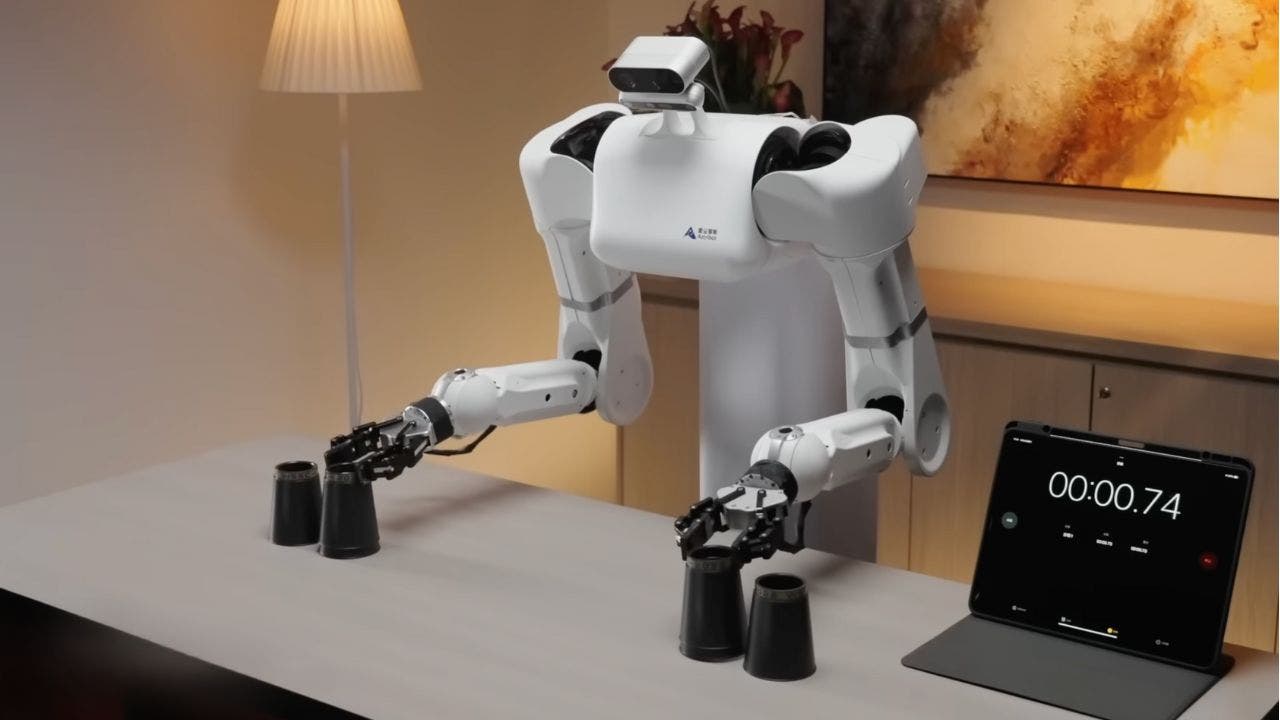
Sometimes, you have to see it to believe it.
And in rare cases, like this one, it freaks out observers watching. In the ever-expanding world of humanoid robots, a new star is rising, and its name is Astribot.
The Chinese company’s latest creation, the S1 model, is turning heads with its astonishing speed and precision.
CLICK TO GET KURT’S FREE CYBERGUY NEWSLETTER WITH SECURITY ALERTS, QUICK VIDEO TIPS, TECH REVIEWS AND EASY HOW-TO’S TO MAKE YOU SMARTER
S1 AI-powered robot (Astribot)
Astribot S1: How it’s breaking speed records
Imagine a robot that can move at a blistering pace of approximately 32.8 feet per second and handle a payload of 22 pounds per arm. That’s Astribot’s S1 for you. It’s like watching a superhero in action. Only this one is made of wires and metal.
The S1’s capabilities are not just impressive; they’re record-setting. The robot’s dexterity is showcased in a video where it performs tasks with such finesse that it can delicately shave a cucumber.
WHAT IS ARTIFICIAL INTELLIGENCE (AI)?

S1 AI-powered robot (Astribot)
It can even engage in the art of calligraphy.
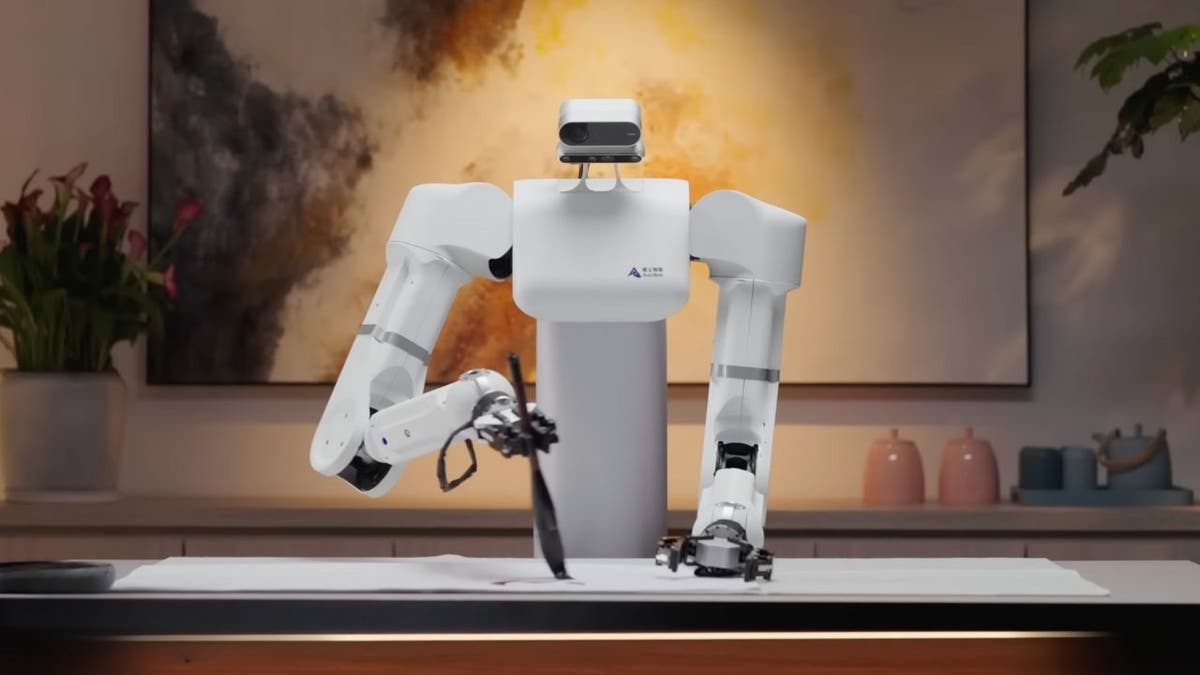
S1 AI-powered robot (Astribot)
That’s not all. It can also open and pour wine and flip a sandwich in a frying pan.

S1 AI-powered robot (Astribot)
And for those who hate ironing and folding laundry, the S1 does that, too.
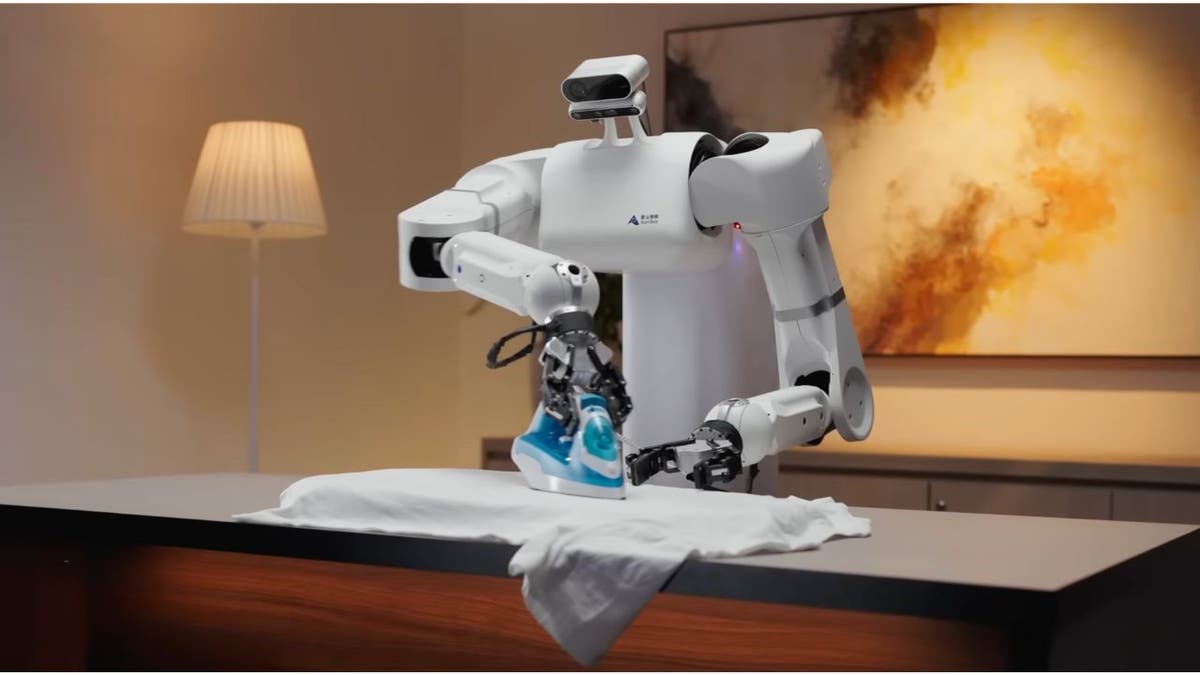
S1 AI-powered robot (Astribot)
MORE: ELECTRIC HUMANOID ROBOT POISED TO SHAKE UP THE JOB MARKET
What sets the Astribot S1 apart from other robots?
The S1’s ability to mimic human movements sets it apart from other robots. This robot is a learner, an imitator and a potential pioneer in robotics. The questions it raises are as intriguing as its abilities. Does it have a lower half? Can it walk, or is it destined to remain stationary? These are the mysteries that have yet to be answered.
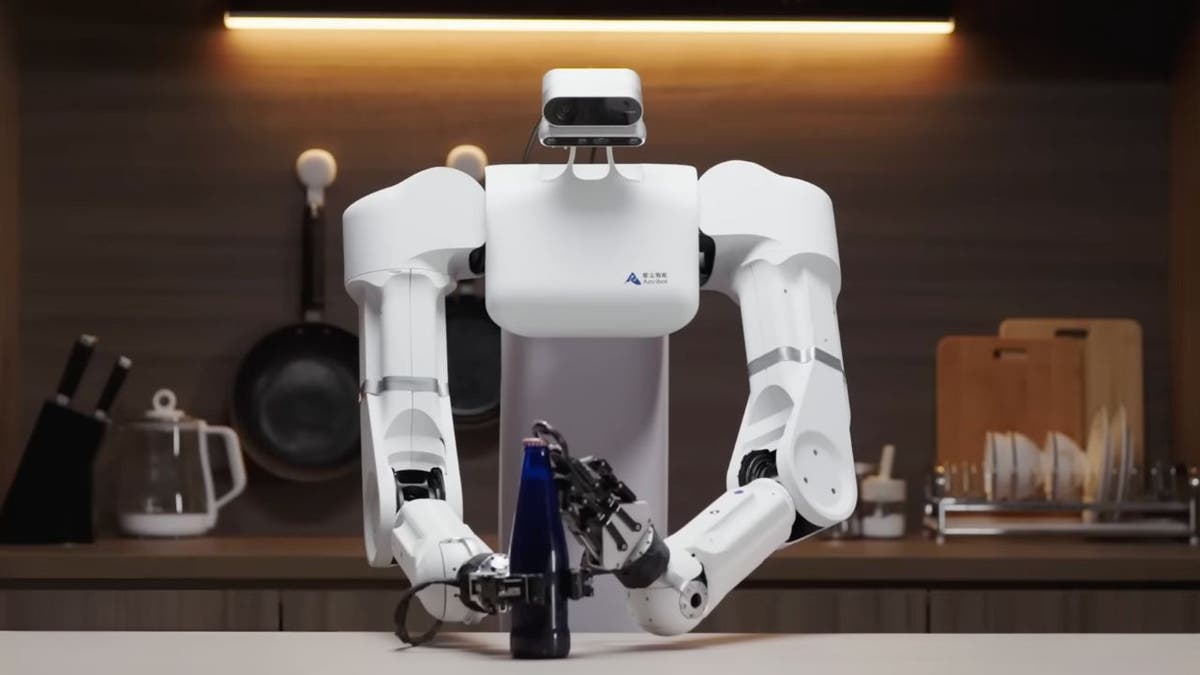
S1 AI-powered robot (Astribot)
MORE: THE SHAPE-SHIFTING UNDERWATER ROBOT PIONEERING THE DEPTHS OF THE SEA
The backstory of the Astribot S1 robot
Founded in 2022 in Shenzhen, the Astribot maker Stardust Intelligence has roots that trace back to the Tencent Robotics Laboratory, Baidu, and the Hong Kong Polytechnic University, with its founder, Lai Jie.
The S1 took a year to evolve and is expected to hit the market later in 2024. The robot’s name, inspired by the Latin proverb “Ad astra per aspera,” reflects its journey and commitment to AI robot technology.

S1 AI-powered robot (Astribot)
MORE: HOW AI IS PAVING THE WAY TO SMOOTHER STREETS USING AUTONOMOUS ROBOTS
Kurt’s key takeaways
As Astribot prepares to launch the S1 robot, the world watches with bated breath. Will it revolutionize the way we think about humanoid robots? Will it outshine its competitors and set a new standard in the industry? Can the U.S. keep us with this Chinese technology? Only time will tell. But one thing is certain: the robot wars have begun and Astribot’s S1 is leading the charge.
As humanoid robots become more adept at tasks traditionally performed by humans, how do you feel about the potential impact on employment and job security? Let us know by writing us at Cyberguy.com/Contact.
For more of my tech tips and security alerts, subscribe to my free CyberGuy Report Newsletter by heading to Cyberguy.com/Newsletter.
Ask Kurt a question or let us know what stories you’d like us to cover.
Answers to the most asked CyberGuy questions:
Copyright 2024 CyberGuy.com. All rights reserved.
Technology
Samsung mocks Apple’s crushing iPad Pro ad with its own ‘UnCrush’ pitch
/cdn.vox-cdn.com/uploads/chorus_asset/file/25450390/videoframe_33450.png)
On one side, responses included creatives like Hugh Grant and anyone who spotted a slightly-too-on-the-nose representation of Big Tech’s steamroller approach to art, copyright, and the past, powered by the might of generative AI tools. On the other there were the people ticked off by the knowledge that there was any backlash at all.
In response, the Samsung Mobile account on X posted this video with the hashtag “UnCrush,” which Ad Age reports was created by BBH USA and directed by Zen Pace. It shows a woman stepping over debris and spilled paint reminiscent of the end of Apple’s big hydraulic press incident and taking a seat to hum and play notes on a guitar assisted somehow by notes displayed on her Galaxy Tab S9 and the power of Galaxy AI.
No matter which side you’re on when it comes to the great iPad ad political divide, it’s a little fun to see Samsung trying to find a weak point in Apple’s armor again. Samsung’s marketing department used to practically specialize in this stuff, which the company’s lawyers’ argued: “drove Apple crazy,” but it seemed to run out of gas after deleting ads about iPhones dropping the in-box charging adapted. More recent attempts, like a browser-based Galaxy test drive for iPhone owners, just haven’t had the same punch as mocking that distinctive notch.
-

 News1 week ago
News1 week agoCompass Direct LLC’s 2024 Registration in North Carolina
-

 World1 week ago
World1 week agoTech compliance reports, Newsletter
-

 News1 week ago
News1 week agoMan, 75, confesses to killing wife in hospital because he couldn’t afford her care, court documents say
-

 News1 week ago
News1 week agoColumbia University cancels its main commencement ceremony after weeks of turmoil
-

 World1 week ago
World1 week agoPentagon chief confirms US pause on weapons shipment to Israel
-

 World1 week ago
World1 week agoConvicted MEP's expense claims must be published: EU court
-

 Politics1 week ago
Politics1 week agoRFK Jr said a worm ate part of his brain and died in his head
-

 Politics1 week ago
Politics1 week agoPresidential polls show deadlocked race as party conventions quickly approach













